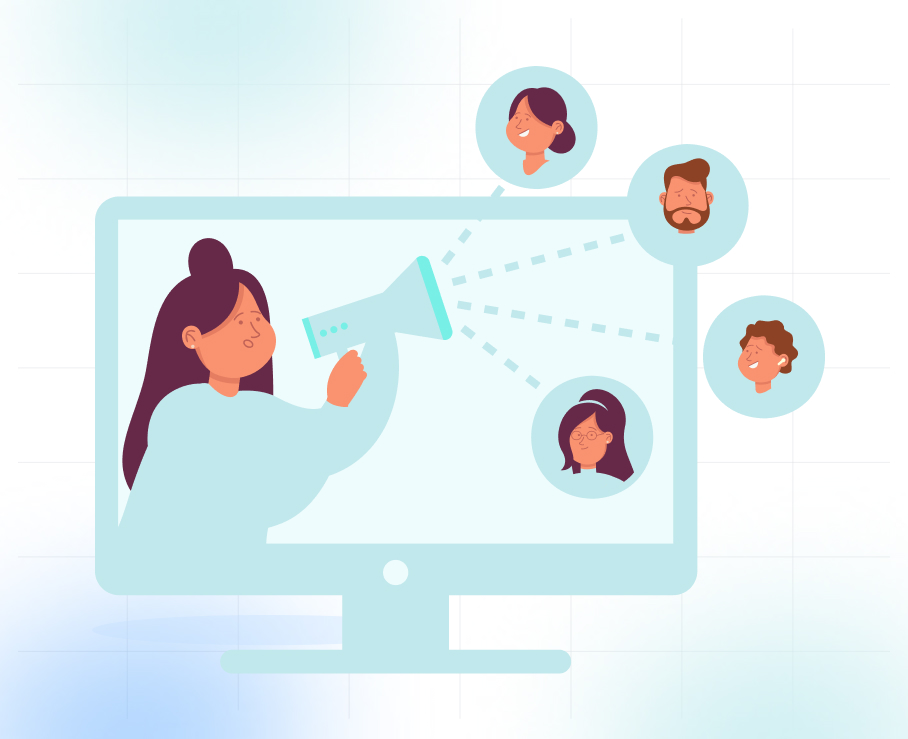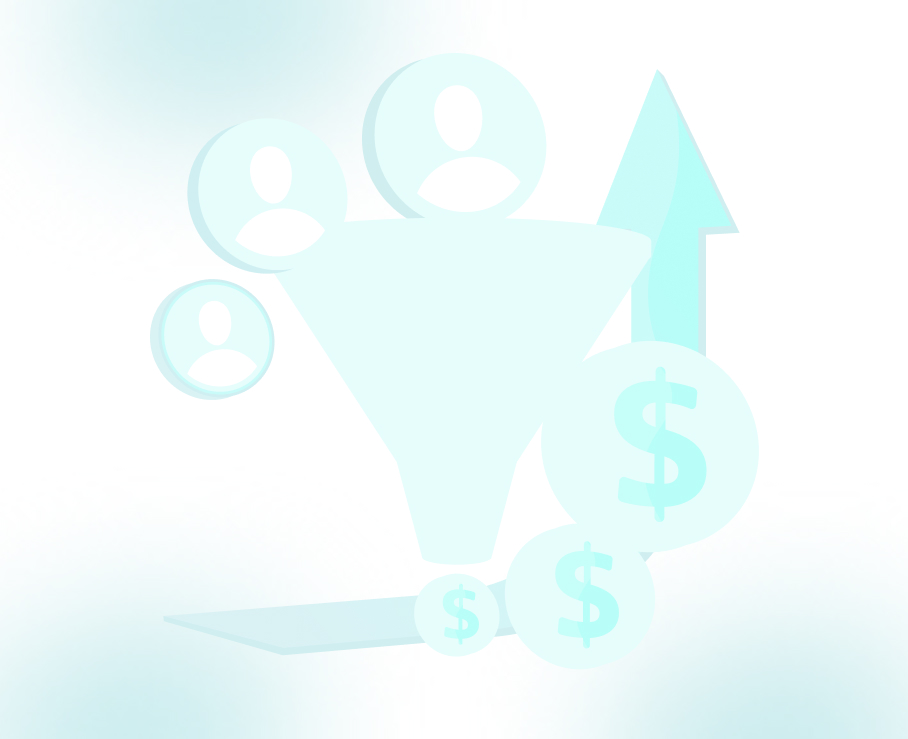
Demand Generation: Strategies and Benefits Explained

Having a great product or service alone isn’t enough. Many businesses face a critical challenge: How do we generate consistent interest and demand that converts into real revenue? Even the best offerings risk being overlooked without a strong demand generation strategy.
According to Gartner, 75% of B2B buyers prefer a sales experience without interacting with a sales representative, further highlighting the importance of creating a seamless process that builds awareness, establishes trust, and nurtures prospects throughout their buying journey.
By incorporating these insights, we can gain a deeper understanding of the increasing preference for non-intrusive, content-driven engagement, which is why demand generation is more crucial than ever. In this guide, we’ll explore essential demand generation strategies and how they can benefit your business by driving sustainable growth, improving lead quality, and aligning marketing with sales for maximum impact.
Demand Generation vs. Lead Generation: What MSPs Need to Know
For Managed Service Providers (MSPs), understanding the difference between demand generation and lead generation is essential for building a strong and sustainable sales pipeline. While both play critical roles, they serve different purposes at distinct stages of the customer journey. Let’s explore what sets them apart and how they can be leveraged to grow your business.
Demand Generation:

Demand generation is a long-term strategy that focuses on creating awareness and nurturing interest in your services. It’s all about laying the foundation for future sales by educating prospects, building trust, and keeping your brand on their radar. This is where consistent, personalized communication comes into play, often driven by email marketing.
- It’s all about creating awareness: Demand generation helps introduce your business to potential clients who may not even know you exist yet.
- It focuses on relationship-building: Instead of asking for an immediate sale, it nurtures relationships over time, ensuring your business stays top-of-mind.
- Educational content is key: Through valuable and relevant content, demand generation shows prospects how your service can solve their challenges, whether they’re ready to buy now or later.
Demand generation isn’t a quick win; it’s about warming up leads so that when they’re ready to make a decision, you’re already at the forefront.
Lead Generation:

Lead generation is much more direct. It’s focused on identifying prospects who are already showing interest in your services. It’s about capturing their contact details and qualifying them as potential customers. Once you have their information, you can engage further and move them down the funnel.
- It’s about capturing interest: Lead generation takes the prospects who are already engaged and gathers essential details, like their name, email, and business information, so you can follow up.
- Qualifying prospects: Lead generation identifies which prospects are worth pursuing. You focus on those who show clear intent to buy, turning them into actionable sales opportunities.
- Actionable data: This stage is all about converting cold leads into something more tangible. Through lead magnets or landing pages, you collect valuable information that your sales team can use to close the deal.
Lead generation is the step where interest becomes actionable, and you begin to see a more immediate return on your marketing efforts. To achieve this, MSPs and SMEs must implement focused strategies that not only attract attention but also build lasting relationships, driving sustainable growth and a stronger sales pipeline. Let’s explore the core strategies that power effective demand generation.
Core Demand Generation Strategies That Drive Growth for MSPs and SMEs

1. Email Marketing for Effective Multi-Channel Outreach
In B2B sales, especially for MSPs and SMEs, email marketing remains the top-performing channel for demand generation, far surpassing cold calls. Email lets you send personalized, relevant messages at scale to decision-makers who prefer thoughtful, non-intrusive communication over unsolicited calls.
2. Content Marketing to Nurture Leads and Build Authority
Effective demand generation goes beyond just outreach. It requires educating and engaging prospects throughout their buyer journey. This content-driven nurturing establishes your brand as a trusted expert, encourages repeat engagement, and gradually converts cold prospects into warm, sales-ready leads.
3. Account-Based Marketing (ABM) & Highly Targeted Campaigning
Not all leads are equal. Account-Based Marketing (ABM) focuses on high-value accounts that are crucial for your business growth. By delivering personalized, industry-specific messaging, ABM addresses the unique challenges and needs of each account.
This precision targeting increases response rates, shortens sales cycles, and improves pipeline quality, ensuring your sales team focuses on the most promising prospects.
ABM ensures your marketing efforts are concentrated where they matter most, driving efficiency and maximizing results.
4. Appointment Scheduling to Convert Leads into Revenue
Generating interest is just the first step. The key is turning that interest into actual meetings. By integrating appointment scheduling into your demand generation process, you can seamlessly move leads to qualified meetings, eliminating the need for cold outreach. This approach speeds up your sales pipeline, improving conversion rates and driving predictable revenue growth.
5. Referral and Partner Programs
Referral and partner programs are a great, often underutilized, way to generate leads. Encouraging your current customers to refer others is powerful; people trust recommendations from others more than a cold outreach. Offering rewards or discounts for successful referrals can motivate your clients to spread the word about your services.
Partnerships with businesses that share the same target audience but aren't direct competitors are also valuable. Through joint efforts like co-branded content or mutual introductions, both businesses can reach new prospects. These partnerships help generate high-quality leads who are already familiar with your brand, making it easier to build relationships and convert them into customers.
By implementing these core strategies, MSPs and SMEs can effectively guide prospects through each stage of the demand generation journey. Understanding and optimizing this funnel is crucial for converting initial awareness into qualified sales opportunities and fostering long-term customer growth.
The Demand Generation Funnel: From Awareness to Sales Qualified Leads

The demand generation funnel maps the journey from first brand exposure to delivering highly qualified sales leads. Understanding each stage helps MSPs and SMEs focus efforts on driving consistent, high-quality growth.
- Awareness: Put your brand exactly where MSP decision-makers look. Laser-targeted messaging that solves real problems, not generic pitches, gets you noticed and remembered.
- Interest & Consideration: Serve up content that speaks their language: sharp case studies, clear ROI stories, and emails that address their pain points. Build trust by showing you get their world.
- Conversion: Turn interest into action with precise nurturing. Focus only on leads who raise their hand, are qualified, and ready to talk. Book meetings fast without wasting sales reps' time.
- Retention & Expansion: Keep customers close with ongoing value, spotting upsell chances before they do. Grow predictable revenue by turning one deal into many.
However, many businesses face recurring challenges that can hinder their efforts to generate demand. Let’s explore some of the most common obstacles.
Common Demand Generation Challenges

Even the most well-intentioned demand generation efforts often fall short due to strategic blind spots and execution gaps. Here are the key obstacles that MSPs and SMEs frequently face when trying to build a reliable sales pipeline.
Inconsistent Lead Quality
- Many MSPs and SMEs find that while they generate leads, the quality isn’t always up to par. Efforts that cast too wide a net or rely on outdated targeting strategies, often lead to a mix of low-quality leads. These leads waste valuable time and resources, especially when they don’t match your ideal customer profile.
Misalignment Between Marketing and Sales
- A breakdown in communication between marketing and sales teams can lead to confusion about what makes a “qualified lead.” When marketing pushes leads that sales aren’t ready for, or when sales follow up with prospects that marketing hasn’t nurtured properly, it disrupts the entire flow and wastes effort on leads that won’t convert.
Limited Visibility Into Campaign Effectiveness
- Without clear tracking tools and accurate data, businesses often struggle to understand the real impact of their demand generation campaigns. Metrics like engagement rates and conversions can become fuzzy, making it tough to know where to double down on efforts and where to adjust strategies.
Overemphasis on Volume Over Quality
- It’s easy to focus on increasing the volume of leads, but that approach can backfire when the quality suffers. Many MSPs and SMEs fall into the trap of casting a wide net and generating a high quantity of leads without considering how likely they are to convert. Additionally, uncleaned or outdated email lists can significantly impact your results—sending messages to disengaged or incorrect contacts only wastes resources and can hurt your reputation with email providers.
Difficulty Nurturing Leads Over Time
- Lead nurturing is often a neglected area. Too many businesses focus on the initial lead capture, forgetting that staying engaged with prospects over time is critical. Without regular follow-ups and valuable touchpoints, leads can go cold, and potential sales opportunities are lost because the connection wasn’t properly maintained.
Addressing these challenges requires a thoughtful approach and consistent effort across all stages of demand generation. By refining your strategies and focusing on quality, you can build a more reliable and effective sales pipeline.
Transform Your Sales Pipeline with Qualified Appointments
At TLM, we focus on delivering sales-qualified appointments through precision-targeted email marketing campaigns. Our process identifies the right decision-makers, engages them with tailored messaging, and secures valuable meetings at the optimal moment. Whether you're seeking a consistent flow of high-quality leads or need to optimize your sales pipeline, TLM’s strategic approach ensures every appointment is a valuable opportunity.
We don't just generate leads; we create meaningful, qualified connections that align with your business objectives. With years of experience across various industries, particularly with MSPs in the U.S., Canada, and Australia, we ensure that your outreach is not only effective but also efficient, reaching the right people at the right time.






